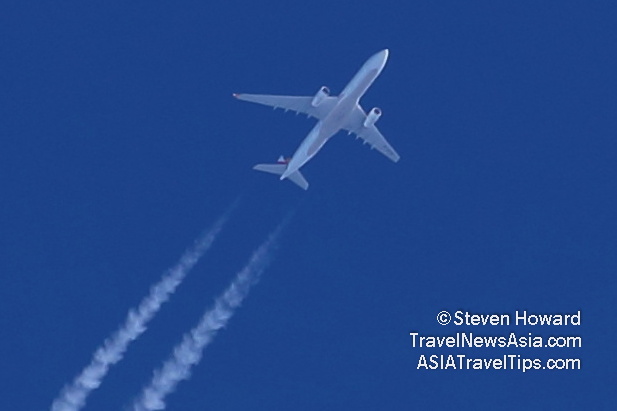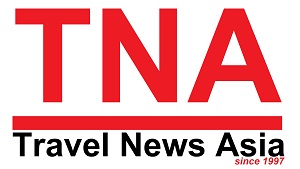|
(25 Nov 2021)
Preliminary October 2021 traffic figures from
the Association of Asia Pacific Airlines (AAPA) show that
international air passenger demand remained significantly
depressed during the month, with the impact from the recent easing
of border restrictions yet to be seen.
In aggregate, only 1.2 million international
passengers travelled on the region�s carriers in October, 3.9% of
the 31 million passengers recorded in the same month of 2019.
Measured in revenue passenger kilometres (RPK), international
passenger demand was 5.6% of pre-pandemic levels whilst available
seat capacity averaged 14.4% of the corresponding month in 2019.
As a result, the international passenger load factor was a lowly
30.9% for the month.
By contrast, air cargo markets were robust,
benefitting from sustained global demand and capacity shortages.

Philippine Airlines A330-343 reg: RP-C8766 at 40,000 feet on its way from Manila to Doha, Qatar. Picture by Steven Howard of TravelNewsAsia.com
Asia Pacific airlines recorded
another month of vigorous growth in international air cargo demand
in October, as reflected in the 22.3% year-on-year increase in
freight tonne kilometre (FTK) terms.
Offered freight capacity
expanded by a significant 20.0% year-on-year, albeit at a
relatively slower pace than the growth in demand, leading to an
elevated average international freight load factor of 74.2% for
the month.
Mr. Subhas Menon, AAPA
Director General, said, �Whilst October continued to be an
extremely challenging month for international travel markets,
solid orders for consumer goods and industrial components buoyed
air cargo demand, especially as retailers sought to increase stock
levels ahead of the year-end holiday season and major shopping
events. In addition, supply chain congestion at some shipping hubs
boosted demand for air shipments.
�While the gradual reopening of
borders by governments is a welcome move, what is sorely needed is
the harmonisation of travel policies and health protocols,
including measures related to testing, vaccination recognition and
digital verification. This will reduce complexity and confusion
amongst passengers and carriers, which will in turn help boost
confidence in the travel process.
�In order for air travel
recovery to be sustained over the coming year, we urge more
governments to collaborate across borders on travel measures and
health-related protocols, in line with ICAO and WHO guidelines, so
that air travel is once again accessible to the wider public.�
|
Headlines: |
|
|

